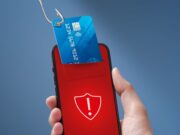Almost all business websites aren’t well-guarded against cyberattacks and identity theft. Besides phishing emails, there are other ways attackers can get in. Having experts manage your website’s domain can help shield your business from these threats.
Domains are the first points of attack in companies. The domain is the central communication medium where people find you and interact with your brand. Protecting your domain is crucial because if it gets attacked, it can harm your reputation, cost you money, or even shut down your business temporarily.
98 Percent of Critical Infrastructure Unprotected

When experts looked at millions of important websites worldwide to see how well they were protected, they found that 98 percent weren’t very secure. They checked technical details and how well they were put into action. Almost every website had some part that wasn’t safe.
There are rules set by the government to make sure websites are secure, and not following them is against the law. Critical infrastructure includes places like hospitals, energy networks, and transportation systems, which are especially important and need strong protection.
Millions of important websites worldwide to see how well they were protected, they found that 98 percent weren’t very secure.
Possible Risks
Spoofing is when someone misuses a website address. They can use a simple piece of code to send emails pretending to be from someone important, like the CEO or IT department. Because people trust these senders, they might click on harmful links in the emails without realizing it. If these attacks aren’t stopped, companies might blame their employees for falling for them. Sometimes, a hacker can secretly read emails or even change them before they’re delivered.
But not all attacks come from outside; sometimes, someone who has access to the website address can make it expire, causing the website to shut down.
Devastating Consequences of identity theft
Cyber attacks bring even more dangers: hackers can steal and copy unprotected company domains (website addresses). They might make a fake website that looks exactly like the real one, with only a tiny change in the address. Sometimes, the fake website might even be more secure than the original, making it seem more trustworthy. For example, in banks, if the website isn’t well-protected, customers could be in danger.
A phishing email could trick them into going to a fake website that looks real and then steal their account information and money. This kind of attack can seriously harm a financial institution and its customers.

Protection Against Cybercriminals
Companies can keep themselves safe from these dangers by making sure their website addresses are well-protected and managed. When an address is secure, it’s like having guards protecting a house. You can stop phishing emails by setting rules for which servers are allowed to send emails from your domain, or by adding a special code to emails that only the receiver can understand. But it’s also important to protect the address itself. For example, if your address ends with “.com”, hackers might try to use “.net” instead. By securing different versions of your address early on, even in other countries, you can avoid a lot of problems later.

How Domain Management Promotes Sustainability
Sending one email creates about four grams of carbon dioxide. If we think about the fact that 300 billion emails are sent every day, that’s a lot of CO2 – around 1.25 million tons every day! And 15 percent of those emails don’t even make it to the right person, ending up in spam folders. With better domain management, we could save up to 180,000 tons of emissions. Lost emails also mean wasted time and extra work for everyone, lost sales, and damage to reputation. But all of this could be prevented with simple steps.






















